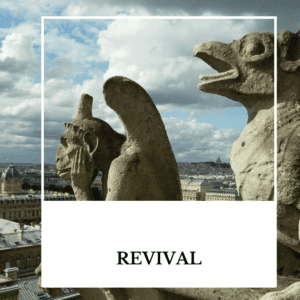Program online course the history of gothic architecture
Introduction
Unit 1

The origins of Gothic architecture can be traced back to a 12th century French clergyman named Suger (1081-1155), who was abbot of Saint Denis and friend and advisor to King Louis VII of France.
- How Gothic Began
- Romanesque
- The Basilica
Unit 2

The new choir that Suger had built for Saint Denis was the first Gothic structure. It is different in many ways from the Romanesque churches we saw earlier. It is light, airy, and filled with large windows. Instead of thick walls and massive columns, only thin piers support the soaring vault above.
2.1 Characteristics of Gothic
2.2 Architectural Components
2.3 The Elevation
2.4 How Gothic Buildings Stand Up
2.5 Medieval Christianity
Unit 3

Like any other style, Gothic architecture didn’t remain constant across the centuries. It changed and developed over time. French Gothic is generally divided up into four phases. Gothic had different phases and chronologies in England and different features all over Europe.
3.1 Phases of Gothic
3.2.1 Sculpture
3.2.2 Stained Glass
3.2.3 Tracery
3.2.4 Other Decoration
3.3.1 Iconography
3.3.2 Some of the Ideas Behind Gothic Churches
Unit 4

Soon after the style was invented in France, it spread to England and then to the rest of Europe.
4.1 Gothic in England
4.1.1 Key Features of English Gothic
4.1.2 Fancy Vaulting
4.1.3 Phases of English Gothic
4.2 Gothic in Northern Europe
4.2.1 Hall Churches
4.3 Gothic in Southern Europe
4.3.1 Italy
4.3.2 Spain and Portugal
4.4 Gothic Secular Buildings
Some Gothic Secular Structures
Unit 5

After being largely forgotten for a few centuries, Gothic was eventually appreciated again. In fact, people began to once again build in a Gothic-inspired style called Gothic Revival. The Gothic Revival began in 18th-century England and gained widespread popularity in the 19th century.
5.1 The End of Gothic
5.2 Gothic Revival
5.2.1 Augustus Pugin
5.3 What happened to Gothic structures over time?
5.3.1 Eugene Viollet-le-Duc
3 Comments.
Wow What great information. Thank you for the time you spent on this post.
This is actually valuable I hope everybody gets the point youre trying to make here. Im sure all of us readers appreciate your efforts as much as me!
bookmarked!!, I like your blog!